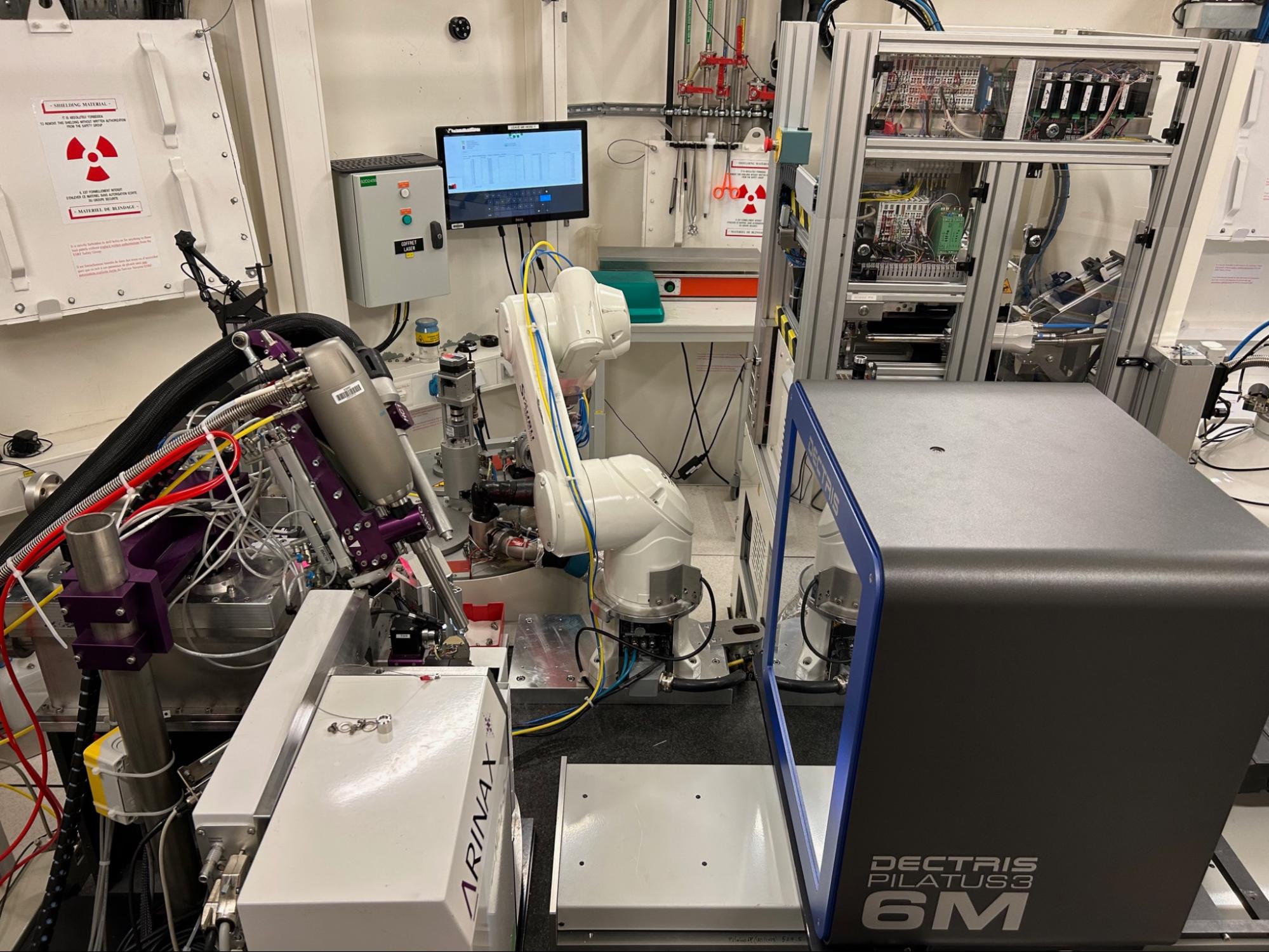A comparative anatomy of protein crystals: lessons from the automatic processing of 56,000 samples.
IUCrJ 6, 822-831 2019

The ESRF and EMBL Grenoble have long worked together on the automation of experiments in macromolecular crystallography (MX). This reached its peak in the form of a new beamline on MASSIF-1 (ID30A-1) at the ESRF that fully automates the process of mounting, locating, centring to the optimal diffraction volume, characterising and collecting data, if possible, from multiple cryo-cooled crystals. The EMBL Grenoble co-responsible for MASSIF-1 is Matthew Bowler, a member of the Synchrotron Crystallography Team, who commissioned the beamline and has been involved in the MASSIF project since its inception.
MASSIF-1 is a unique facility for the high throughput, fully automatic characterisation and data collection of macromolecular crystals. This service is not designed to replace user visits to the synchrotron, but rather to do the hard work of screening crystals or collecting routine data sets through the night, freeing researchers to spend more time on challenging data collection problems and study of the underlying biology. These services are hugely popular, with hundreds of samples processed weekly, ranging from initial hits from crystallisation experiments to large-scale data set collection for drug discovery programmes. The automatic routines developed are often able to locate crystals more effectively than the human eye and in many cases have obtained higher resolution data sets, as all positions within a sample can be evaluated for diffraction quality. Beam time is booked flexibly and samples then enter a queuing system. Users interact with the beamline by describing experimental requirements that are used by the beamline software to set data collection parameters, via ISPyB, where results can also be viewed and downloaded.
MASSIF-1 returned to user operation in August 2020 following the ESRF Extremely Brilliant Source (EBS) upgrade with exceptional X-ray characteristics, providing an improved beam with a tunable diameter between 10 and 100 μm2. To benefit from the ESRF-EBS high quality X-ray beam MASSIF-1 underwent a major upgrade with the installation of an EMBL purchased MD2S and a versatile EMBL-ESRF developed FlexHCD sample changer.
In 2022 a CrystalDirect™ harvester developed by the EMBL High Throughput Crystallisation and Instrumentation teams was installed and incorporated into the beamline software environment. Users can now set up an experiment by defining a harvesting plan in CRIMS, which is then used to queue samples in MxCuBE. An automatic workflow, selected according to the experimental requirements, is then used to collect data. This development not only brings in a higher level of automation, but also allows new complex experiments to be automated - in particular, room temperature data collection can now be performed, at scale, in a consistent manner, using a humidity control device. All these new instruments and software improvements allow for an increased throughput to take advantage of the ESRF-EBS X-ray beam characteristics to ensure MASSIF-1 remains at the forefront of automated data collection developments. Further upgrades are also planned, including the integration of automatic fragment screening capability at room temperature, in situ plate screening and sophisticated multi-orientation diffraction data collection experiments.
MASSIF-1 is run as a collaboration between the EMBL Grenoble Synchrotron Crystallography Team and the ESRF Structural Biology Group. See the MASSIF1 webpage for more information on the technical details and the ESRF website for application details.
IUCrJ 6, 822-831 2019
Acta Cryst.D74, 433-440 2018
Cryst. Rev, 22, 233-249 2016
Acta Cryst D72, 966-975 2016
Acta Cryst. D71, 1757-1767 2015
Synchrotron Rad. 22, 1540-1547 2015
In collaboration with the Structural Biology group at ESRF, we provide access to five macromolecular crystallography beamlines and one biological small angle X-ray scattering beamline at the ESRF.